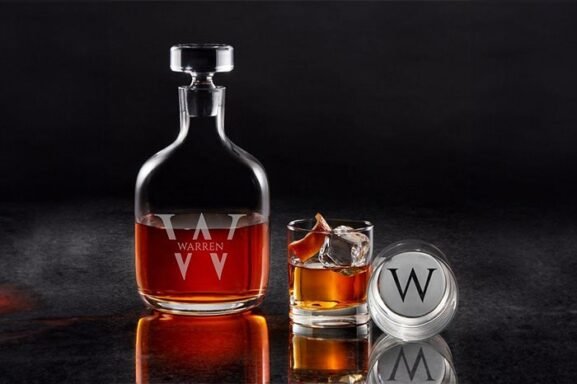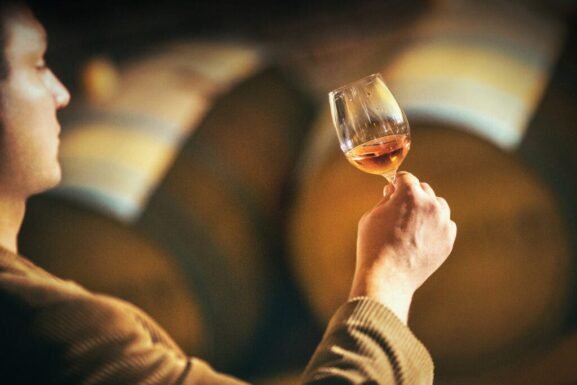How to Know if Your Tequila Is Sustainable
It’s peak margarita season, and there’s a plethora of recipes to try. But how much thought have you given to what’s in your tequila or how it was made?
The global popularity of Mexican agave spirits is not without environmental and human impact.
Francisco Quijano, master tequilero for Valle de Tequila’s Tierra de Agaves distillery and Casa Obsidiana brand identifies three major issues affecting the industry: price fluctuations, impact on agricultural land and agave biodiversity as well as the responsible disposal of waste products.
“Despite the issues, we should never stop drinking agave spirits,” says Matt Luem, co-founder of La Gritona, based in Jalisco’s Valle de Guadalupe. “It’s important for consumers to be educated, and to buy tequila from producers who adopt sustainable practices—these brands are the future of the industry.”
So, how is a consumer supposed to choose amongst the more than 180 palenques (tequila distilleries) and well over 2,000 brands available in the marketplace, according to Quijano’s estimates?
Below, we break down the key issues within the tequila industry and how to purchase responsibly.
Look for Fully Integrated Brands
Distilleries that own agave fields have control of their supply chain and quality. These brands are better able to ride out issues like price fluctuations, agave shortages and degradation of soils.
Currently, the industry is experiencing low prices for agave, which has a negative impact on multiple levels.
“Tequila is tied to only one species of agave, the blue weber, which means we have no flexibility in production,” says Quijano. “Distillers can’t introduce other species. When prices drop, small, independent growers get frustrated: there are thousands of them abandoning their plantations or switching crops mid-cycle.”
Agave shortages can result in distillers sourcing plants from other states. Tequila is also legally produced in designated municipalities in Nayarit, Guanajuato, Michoacan and Tamaulipas.
The Consejo Regulador del Tequila (CRT), the regulating body that oversees production, states that it’s illegal to source agave from non-tequila regions, but it happens. And, while it’s legal to harvest unripe agave, just like using plants imported from other regions, it can change the profile or yield of a distillery’s product.
Overusing agricultural land also has a profound impact on the final product. Because agave demand is high, many growers repeatedly use the same plots, which Quijano says, need two to three years to recover between plantings. When fields are replanted too quickly, the soil is depleted of vital nutrients, which impacts the health and quality of the plants.
Responsible brands, like Tierra de Agaves/Casa Obsidiana—whose owners the Beckmann Gonzalez family have been cultivating agave and producing tequila for nearly 170 years—rotate their agave and propagate from the tiny plantlets that sprout from each mother plant.
“Most of our ranches have been using the same genetic lineage on plantlets for 120 years,” says Quijano. “That means we haven’t imported or acquired plantlets from other growers or regions, which enables us to apply sustainable agricultural practices and at the same time, keep the botanical lineage intact and free of mutations or genetic changes.”

Pay Attention to Where and How the Agave is Sourced
It’s not always possible for small producers to grow their own agave. Another alternative is to look for brands committed to sourcing from growers who support biodiversity.
Quijano notes that the best way to secure a consistent, high-quality supply of agave is for distillers to contract with growers for a set price for a harvest.
For example, Lalo Tequila works with just a single Highlands grower who has received an Empresa Socialmente Responsable (ESR) designation from the Mexican government that denotes ethical, sustainable farming methods.
La Gritona commits to sourcing only mature agave from local Highland farms, which are known for producing agaves with a fruitier and floral flavor profile as opposed to the more mineral, vegetal notes from the Lowlands.
These kinds of small producers, who are committed to biodiversity, ensure the agave they source is grown in a sustainable manner that promotes genetic diversity, whether grown from seed or propagated from mother plants. Mature agave also has more concentrated sugar, which is essential for the fermentation and production process. Conversely, some large distilleries also use clones (either sourced or grown on their estate) to increase yield—a practice that many experts criticize.
Clones come from tissue that is excised from the mother plant and reproduced in the lab. These lab-generated plantlets all share the same DNA and are eventually transplanted into the field, where they will mature in six to eight years.
This is about the same time needed for natural blue weber plantations, which may be grown from seed or propagated from mother plants. Whereas each of these mother agaves has their own unique DNA codes, which are passed onto their “pups,” clones are controversial because there is no genetic diversity whatsoever, making entire plantations more susceptible to disease or pets.
“Clones are hard to avoid in commercial agave production,” says Luem. “We all know letting agave reach maturity is critically important to the stability of the species. Asking consumers to consider this is a lot: it’s the suppliers and forward-thinking palenques that should be leading the effort to protect the biodiversity of agave.”

Consider The Waste
Biodiversity isn’t the only environmental issue associated with tequila production. The industry’s high-volume waste products—bagasse and vinasse—also play a huge role in sustainability.
The former refers to the spent fiber and pulp left over from the cooking and extraction processes. Untreated, bagasse is indigestible for livestock and leaves traces of contaminants that leach into water and soil. Burning bagasse is a common practice that affects air quality.
Vinasse is the final byproduct of distillation, composed mainly of ethanol and high levels of salt. Improper disposal of agave vinasse can have a detrimental impact upon soil and water health.
The technology required to properly dispose of these waste products is costly and inaccessible for many distilleries, and it does not contribute to ensuring a better product. But, Quijano says, it’s about doing the right thing.
Some distilleries, like Tequila Cazadores and Patron Tequila, have composting facilities for bagasse, after which the fibrous material is returned to the agave fields or used as cattle feed. Other companies, like Astral Tequila, turn bagasse into adobe-like bricks for sustainable home construction.
Tierra de Agaves/Casa Obsidiana has an agave fiber composting plant where the spent fiber is amended with specific bacteria and irrigated with vinasse that’s been treated in an on-site anaerobic reactor that removes 92% of contaminates. The resulting compost is used as fertilizer for their new agave plantations.
Inspect the Label
Like wine, the more information a bottle’s label contains, the greater the transparency about where it was made, what it contains and who made it.
Tequila labels should always have a small rectangle with CRT (Consejo Regulador del Tequila), which denotes the product has been certified by the regulatory authority. It isn’t necessarily a guarantee of quality, but denotes the product meets CRT standards for agave content, age designations and more.
You can also look up a bottle’s Norma Oficial Mexicana (NOM). This is the CRT-required number assigned to tequila distilleries by the Mexican government, which is essentially a license to produce tequila that must be printed on the label. The NOM will tell you what other brands are produced by the distillery, where it’s located and if it contains additives.

What About Additives?
To be labeled as tequila, an agave spirit must contain at least 51% blue weber agave. These blends, known as “mixtos,” contain sugars from other sources such as sugarcanes but other additives may also be used.
Even products labeled as 100% agave can be misleading, as it’s legal for blanco (unaged) tequilas to contain four types of unlisted additives (including glycerin, caramel coloring, oak extract and artificial sweeteners like aspartame or stevia) totaling up to 1% total volume.
“The big issue with additives is transparency,” says Kara Newman, Wine Enthusiast’s spirits reviewer. “Some people have allergies or aversions and its important for them to know what’s in the bottle, but they may also be used to cover up unripe agave, mask defects or create unrealistic expectations regarding flavor or texture, such as the use of glycerin to facilitate a smooth mouthfeel.”
Newman notes that a small but growing number of brands are labeling their tequila “additive-free” or “no additives.” There are also databases, like Tequila Matchmaker, which test, then list, additive-free brands. You can also look up a bottle’s NOM, which will tell you what, if any additives are used.
Consider Packaging
Buying a more sustainable bottle of tequila extends to the packaging, as well. La Gritona recycles old Coca Cola and Dos Equis bottles and turns them into hand-blown keepsake vessels for their tequila. Casa Obsidiana’s artful native clay bottles are made by a ceramist in Oaxaca. Clase Azul Mexico also crafts exquisite ceramic decanters in-country, working with Mexican ceramicists through the distillery’s Tradicion Mazahua workshop, established in 2007.
“We think it’s crucial for new brands to think beyond recycling, and design packages that have a function beyond just holding tequila,” says Luem.
Who’s Behind the Brand?
With so many eye-catching bottles and brands on store shelves, how can consumers distinguish one from the other?
While there are good tequilas backed by celebrities and other types of landowners, family heritage is typically the best sign of a reliable product.
“Look for those distillers that call themselves a ‘Tequila House,’” says Quijano. “It’s a powerful statement that only a few can earn, but brands with a proven legacy, long history of quality products, and documented sustainability practices will be the winners in the marketplace.”
Tequila Ocho, Don Fulano and Siete Leguas are prime examples of tequila houses that grow their own agave through sustainable cultivation and production processes.
While sustainability measures in cultivation and production are important, how a distiller cares for its employees and community also matter. Do they offer programming, like clean water initiatives or fair wages?
Jimadors (agave field workers) are, fortunately, the best-paid agricultural workers in Mexico—however, it’s still important to ensure they are treated with the respect they deserve.
“They have a high degree of training and skill, and they know they have the power of the coa [the hoe-like tool used by jimadors to cut the spines off of agave] behind them,” says Quijano. “We need to take care of them and work closely with them to ensure their legacy and tradition will remain with us for generations to come.”
More Tequila Coverage

In the shop
Riedel Tequila Glass (Set of 2)
In Stock | $39
Published: July 30, 2024

